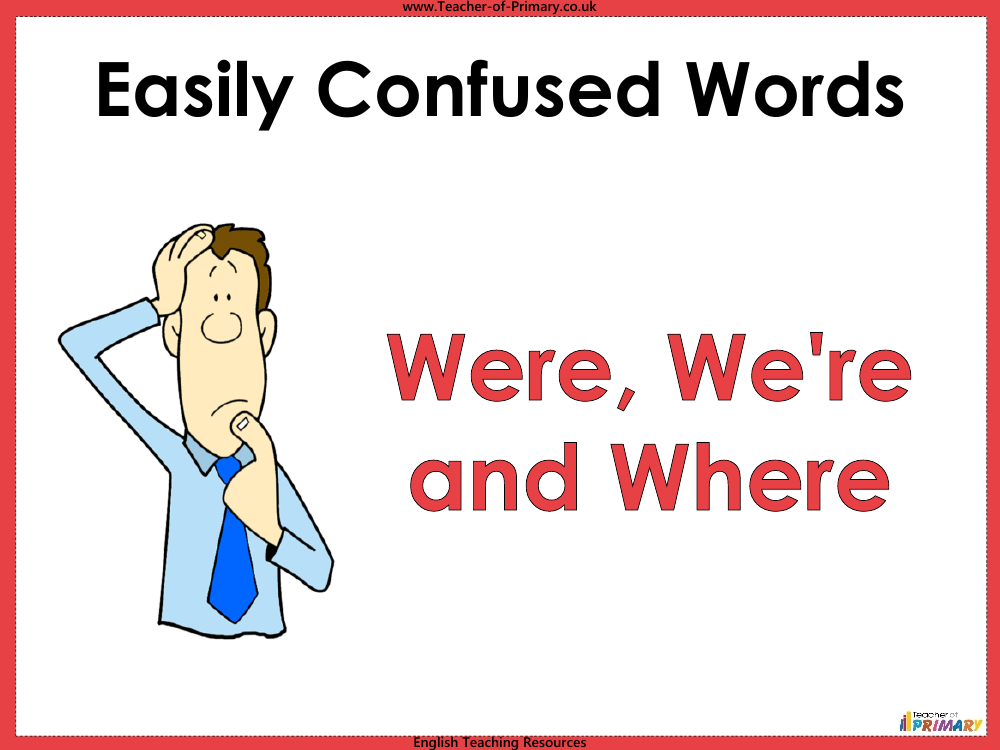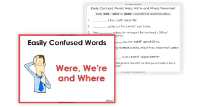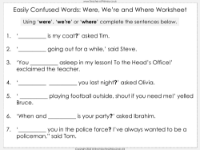Easily Confused Words - Were, We're and Where - PowerPoint

English Resource Description
English Teaching Resources provide a comprehensive PowerPoint lesson focused on the commonly confused homophones "were," "we're," and "where." These words, which sound alike but have different meanings and spellings, are known as homophones. It's crucial for students to learn the correct usage of these words as they are frequently used in everyday language. The objective of the lesson is to enable students to distinguish between these words and apply them correctly in various contexts.
The lesson begins with examples illustrating the use of each word. "Were" is identified as the past tense of "are," used in sentences like "We were in Italy this time last week." "We're" is the contraction of "we are," as in "We're going to the cinema tonight." "Where" refers to a place or direction, used in questions like "Where is it?" or "Where are we going?" The lesson includes activities where students fill in blanks with the correct homophones, reinforcing their understanding through practice. Peer assessment is encouraged, allowing students to review each other's work and provide feedback, which helps solidify their grasp of these easily confused words.

